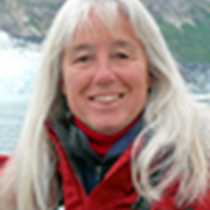For a small place, there is a lot of activity at Los Islotes, both above and below sea level. The islets provide habitat for many creatures. We came to snorkel with California sea lions; and in spite of choppy seas, we did just that. The young sea lions are curious and playful, giving us an experience of a lifetime. One could not help but notice the myriad fish species and invertebrates in the water here as well - colorful jewels seeking shelter, food, and the other necessities of life. At the water's edge, barely within reach of splashing seas and changing tides, Sally-Lightfoot crabs clung to near-vertical rock faces or skittered quickly around on the boulders. Above that, yellow-footed gulls posed patiently and watched astutely for any opportunities that might suit them. These birds are only found in the Sea of Cortez. Higher up we noticed a great blue heron guarding a nest. It needs to be wary of marauding ravens, gulls and peregrine falcons, but otherwise it can drop down to the base of the cliffs to take advantage of the productive sea that provides its meals. Higher still, blue-footed booby pairs whistle and quack as part of their elaborate courtship ritual. Brown boobies, with their white bellies toward the rocks and dark backs outward, blend into the surrounding cliffs. Turkey vultures and frigatebirds soared overhead - each using different methods and body types, but still extremely efficient at what they do.
Not much vegetation survives on these islets - only a few cacti, covered with guano, small fig trees, and some herbaceous plants. Other diminutive life forms escape our distant view, but are certainly there and, like everything else, are an integral part of all that goes on in this environment that started so long ago and intersected and interacted with us today.




